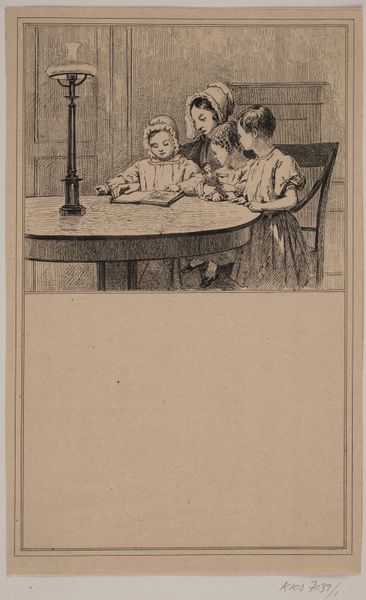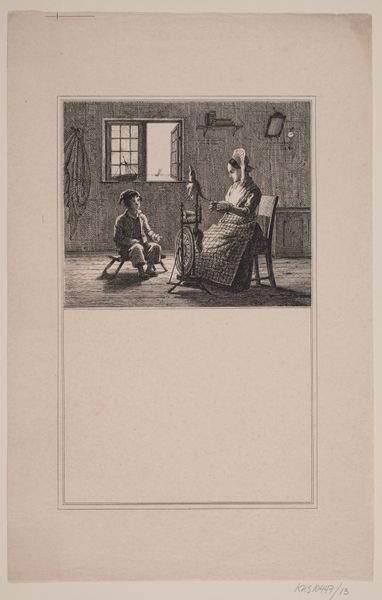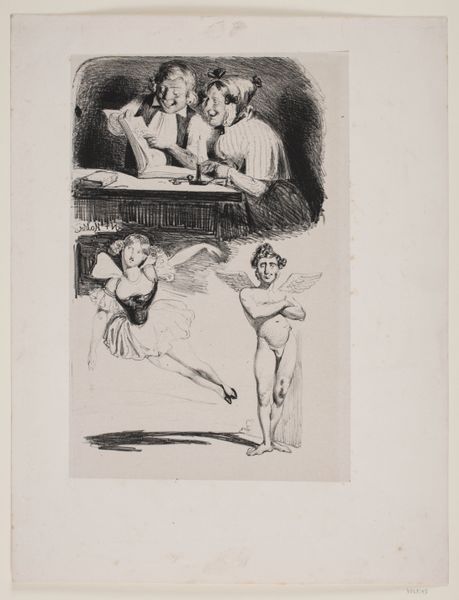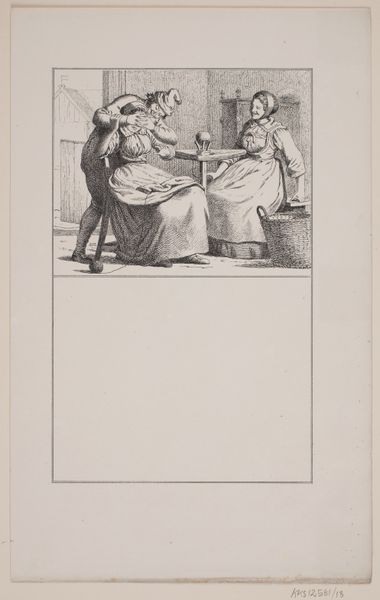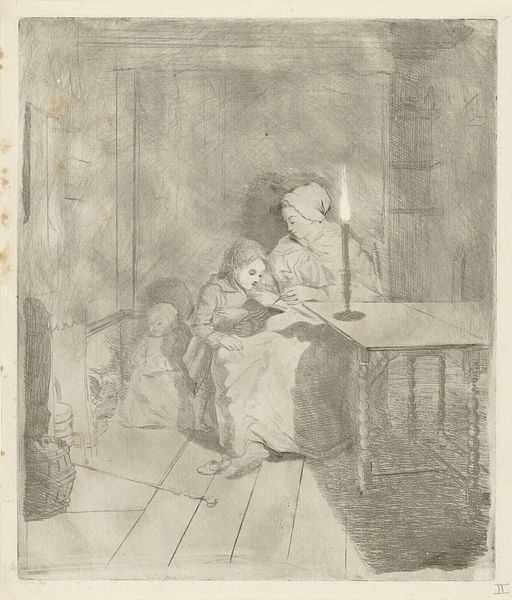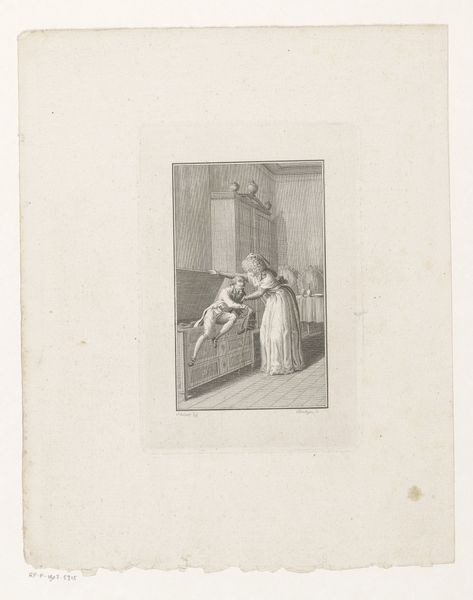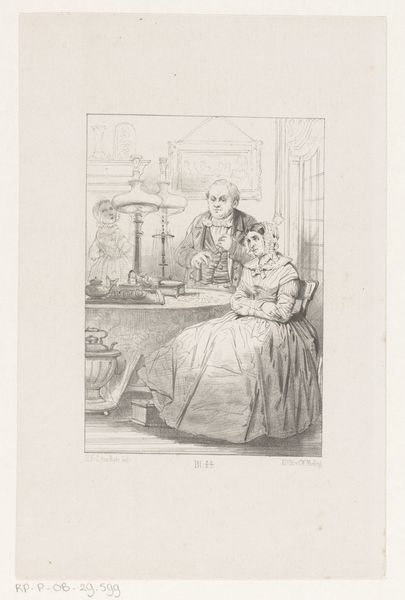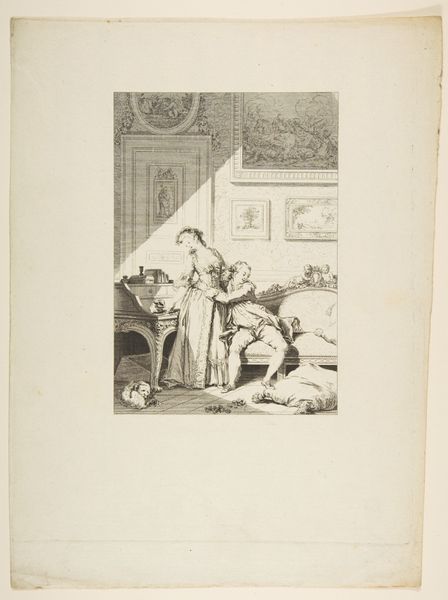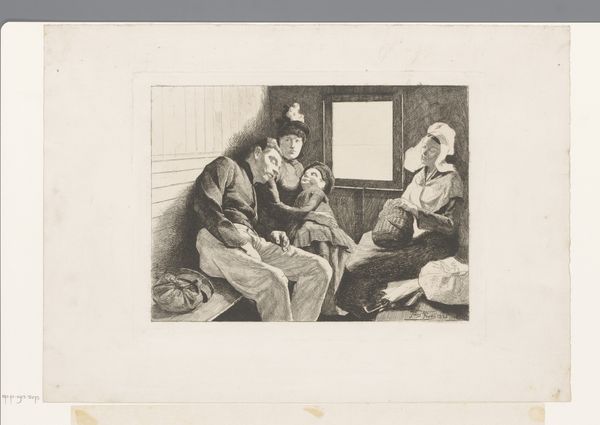
Indledning. Prøvetryk til Chr. Winther og M. Rørbye, "25 Billeder for små børn" 1846
0:00
0:00
drawing, lithograph, print, paper, ink
#
drawing
#
lithograph
# print
#
paper
#
ink
#
romanticism
#
genre-painting
Dimensions: 270 mm (height) x 175 mm (width) (brutto)
Editor: This is Adolph Kittendorff's "Indledning. Prøvetryk til Chr. Winther og M. Rørbye, "25 Billeder for små børn"," a lithograph from 1846. It's a very intimate scene, almost claustrophobic. What strikes me most is the contrast between the quiet concentration of the children and the unseen story within the book. What do you see in this print? Curator: What I find compelling is the lamp – not just as a source of illumination, but as a beacon of knowledge. Consider the cultural symbolism of light throughout history. It’s intrinsically tied to enlightenment, wisdom, and spiritual awakening. And the mother… see how her presence almost blends into the background? Her gesture seems very deliberate, almost protective of her children and their learning. Does this image trigger any cultural memories for you, perhaps from your own childhood? Editor: I hadn't thought about it that way, but it reminds me a bit of my grandmother reading to me and my cousins, that feeling of being safe and enveloped in stories. But is it really that simple, or are we projecting modern sentimentality onto a 19th-century image? Curator: That’s a fair point! Consider that in Romanticism, childhood was often idealized as a state of innocence, a direct conduit to nature and feeling. This print is designed for children, therefore it could evoke similar values in that specific audience, imbuing the viewer with the lessons about familial relationships. However, let's not forget the power dynamics at play - the mother as the primary educator in the domestic sphere. This isn't just about a cozy scene. Editor: I see your point. There's definitely a complexity I didn't appreciate at first glance. Thinking about it symbolically adds a whole other layer. Curator: Indeed. Art often speaks in whispers, using symbols to trigger deeper cultural associations. By observing the visual language and considering the historical context, the print then encourages to recall memories that are unique for all of us. Editor: Thank you. This perspective completely changes how I view the piece. It's more than just a genre painting, it's a layered symbol of learning, family, and cultural ideals.
Comments
No comments
Be the first to comment and join the conversation on the ultimate creative platform.
